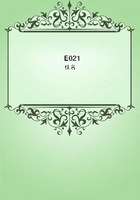
第76章
Yet when we have said all our fine things about the arts, we must end with a frank confession, that the arts, as we know them, are but initial. Our best praise is given to what they aimed and promised, not to the actual result. He has conceived meanly of the resources of man, who believes that the best age of production is past. The real value of the Iliad, or the Transfiguration, is as signs of power; billows or ripples they are of the stream of tendency; tokens of the everlasting effort to produce, which even in its worst estate the soul betrays. Art has not yet come to its maturity, if it do not put itself abreast with the most potent influences of the world, if it is not practical and moral, if it do not stand in connection with the conscience, if it do not make the poor and uncultivated feel that it addresses them with a voice of lofty cheer. There is higher work for Art than the arts. They are abortive births of an imperfect or vitiated instinct. Art is the need to create; but in its essence, immense and universal, it is impatient of working with lame or tied hands, and of making cripples and monsters, such as all pictures and statues are. Nothing less than the creation of man and nature is its end. A man should find in it an outlet for his whole energy. He may paint and carve only as long as he can do that. Art should exhilarate, and throw down the walls of circumstance on every side, awakening in the beholder the same sense of universal relation and power which the work evinced in the artist, and its highest effect is to make new artists.
Already History is old enough to witness the old age and disappearance of particular arts. The art of sculpture is long ago perished to any real effect. It was originally a useful art, a mode of writing, a savage's record of gratitude or devotion, and among a people possessed of a wonderful perception of form this childish carving was refined to the utmost splendor of effect. But it is the game of a rude and youthful people, and not the manly labor of a wise and spiritual nation. Under an oak-tree loaded with leaves and nuts, under a sky full of eternal eyes, I stand in a thoroughfare; but in the works of our plastic arts, and especially of sculpture, creation is driven into a corner. I cannot hide from myself that there is a certain appearance of paltriness, as of toys, and the trumpery of a theatre, in sculpture. Nature transcends all our moods of thought, and its secret we do not yet find. But the gallery stands at the mercy of our moods, and there is a moment when it becomes frivolous.
I do not wonder that Newton, with an attention habitually engaged on the paths of planets and suns, should have wondered what the Earl of Pembroke found to admire in "stone dolls." Sculpture may serve to teach the pupil how deep is the secret of form, how purely the spirit can translate its meanings into that eloquent dialect. But the statue will look cold and false before that new activity which needs to roll through all things, and is impatient of counterfeits, and things not alive. Picture and sculpture are the celebrations and festivities of form. But true art is never fixed, but always flowing. The sweetest music is not in the oratorio, but in the human voice when it speaks from its instant life tones of tenderness, truth, or courage. The oratorio has already lost its relation to the morning, to the sun, and the earth, but that persuading voice is in tune with these. All works of art should not be detached, but extempore performances. A great man is a new statue in every attitude and action. A beautiful woman is a picture which drives all beholders nobly mad. Life may be lyric or epic, as well as a poem or a romance.